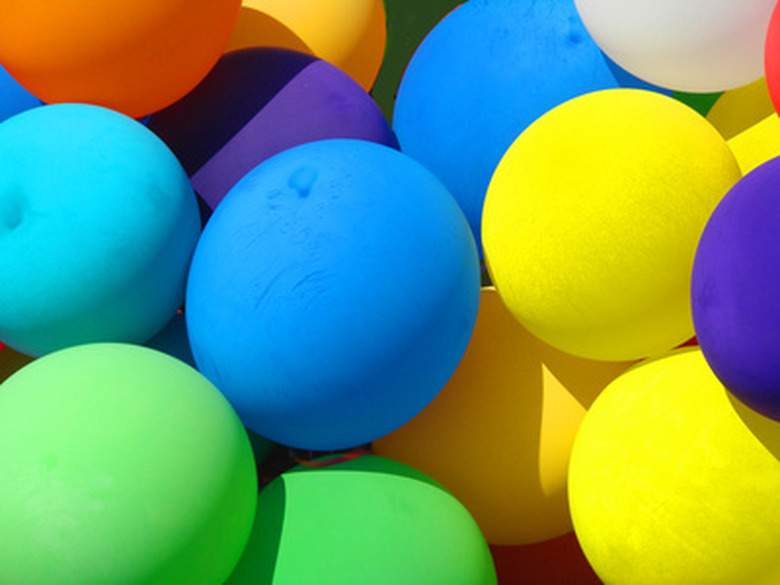Science Projects With Balloons & Sound Vibration
There are sounds all around you. You may not tune into all of them, but the sounds are there. Sound can be taken for granted, but you can teach not just what sound is, but how it works. Sound doesn't simply appear; it travels. Sound vibrates inside your ear, causing your ear to register sounds. Show students how this works with science projects to deepen their understanding of the science of sound.
Visible Sound
Visible Sound
You can make sound visible to your students using balloons and a can. Remove the top and bottom of the can with a can opener. Cut the bottom of the balloon off with scissors. Open the bottom of the balloon wide and slide it over one end of the can. Grab a small hand mirror and tape it to the balloon. Ask for a volunteer. Have the student place the open end of the tin can at his mouth. Now position a flashlight so that the light reflects off the mirror. Ask the student to speak. Your students will be able to see the balloon move the mirror, which moves the light. They are seeing the effect of sound waves. Bring in enough balloons and cans so that small groups of students can repeat this experiment themselves.
Making Music
Making Music
Make drums with balloons, coffee cans and long rubber bands. Cut the bottom out of the coffee can. Cut the bottom of the balloons. Stretch one of the balloons over the top of the can and the second one over the bottom. Slide three or four rubber bands onto the can so that they lie across the top. Snap the rubber bands on top of the can to make noise. Have students pay close attention to the movement in the balloon. The sound that the students hear can be seen in the vibrations of the balloon.
Talking Balloons
Talking Balloons
Select a few students to come to the front of the class. Give them balloons and ask them to blow them up and hold them close. Make sure they blow them up very big, but are careful not to pop them. Now, have one student release the air from the balloon. Watch the opening of the balloon for vibrations. Then, ask another student to do the same, but slowly let the air out as he pulls the opening wider. Listen to the notes; they will be of a lower pitch. If there is a small opening, the sound will be high-pitched, but larger openings cause the sound to be lower-pitched. Repeat the experiment with the other balloons.
Spooky Balloons
Spooky Balloons
Blow up some balloons. You will want 9- or 11-inch balloons. Purchase hex nuts from a hardware store, one for each balloon. Blow up the balloons. Insert one hex nut into each balloon, but not too far; the nuts make the balloons more prone to breaking. Tie the balloons off. Hold a balloon like a bowling ball. Now, turn it palm down. Move your palm in a circular motion. It may take a few seconds, but eventually the nut will swirl inside the balloon. Because of its shape and the hole at the center, it will not only make a high-pitch whistling sound, but also demonstrate centripetal force, which pushes rotating objects toward the center of rotation.
Cite This Article
MLA
Burgio, Meredith. "Science Projects With Balloons & Sound Vibration" sciencing.com, https://www.sciencing.com/science-projects-with-balloons-sound-vibration-12746567/. 23 January 2011.
APA
Burgio, Meredith. (2011, January 23). Science Projects With Balloons & Sound Vibration. sciencing.com. Retrieved from https://www.sciencing.com/science-projects-with-balloons-sound-vibration-12746567/
Chicago
Burgio, Meredith. Science Projects With Balloons & Sound Vibration last modified August 30, 2022. https://www.sciencing.com/science-projects-with-balloons-sound-vibration-12746567/
